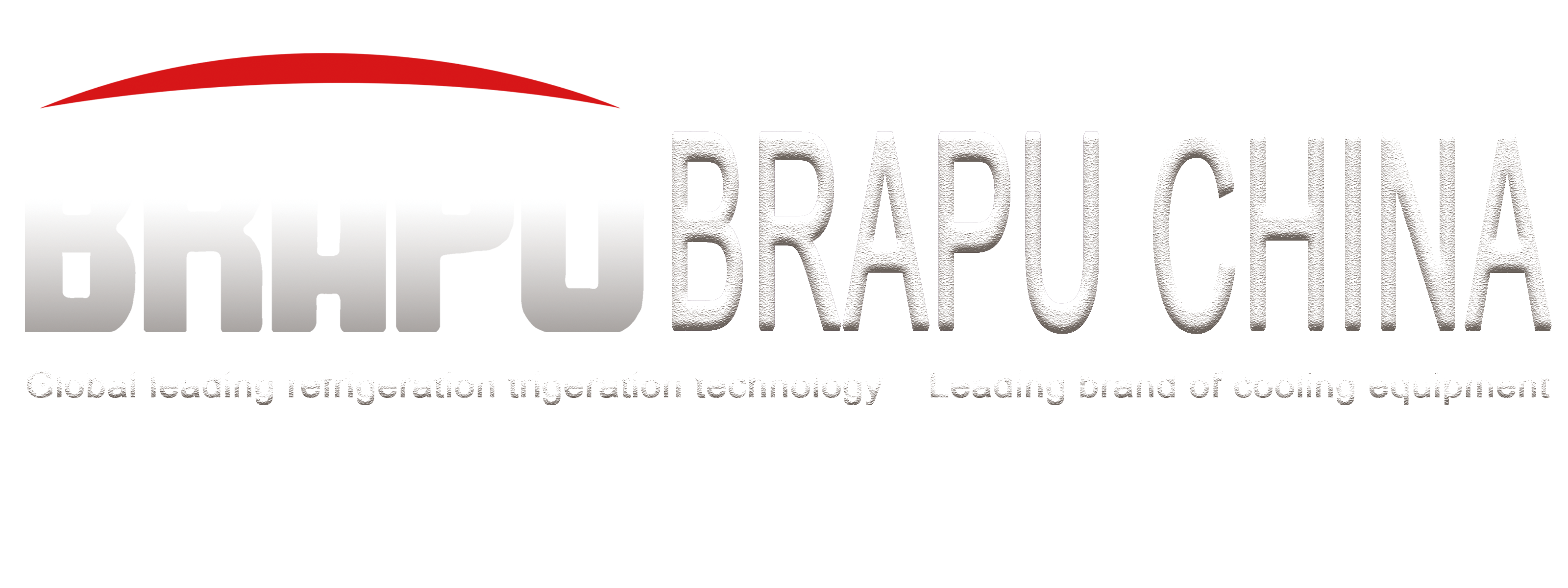In March, the company conducted quarterly installation skills training for installation technicians. After systematic theoretical learning and on-site practical operation, the theoretical experience and operational ability of installation technicians were further improved.
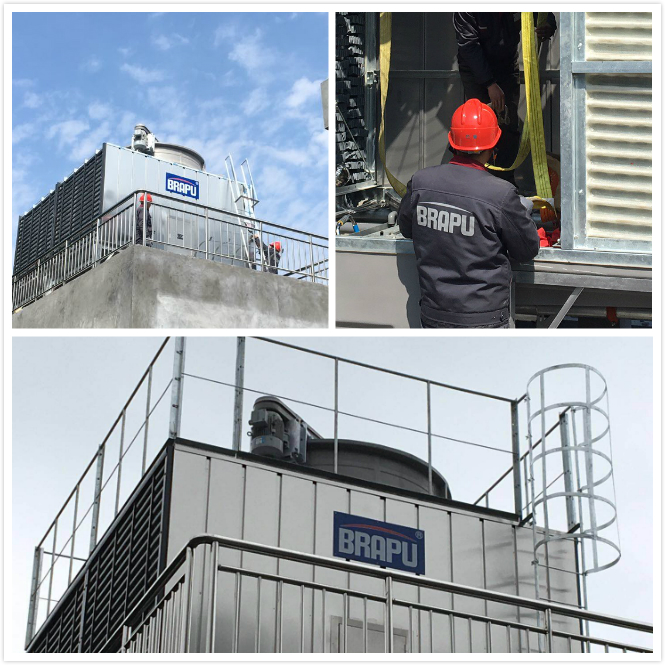
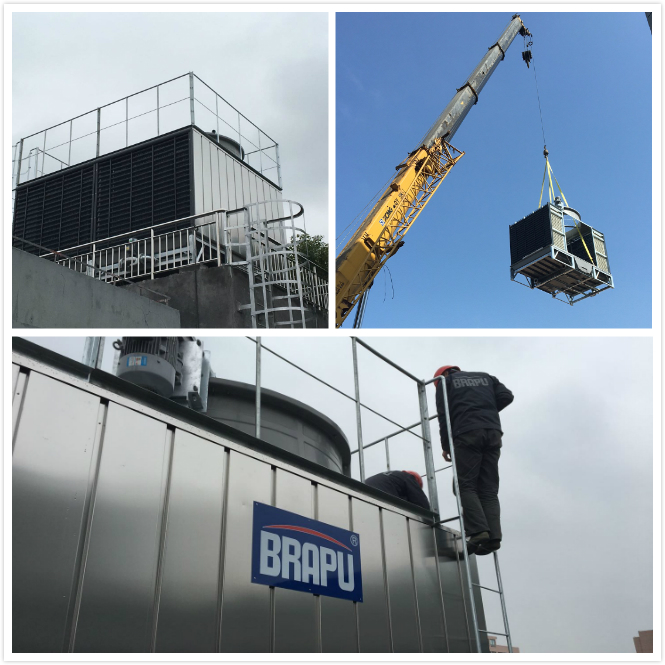
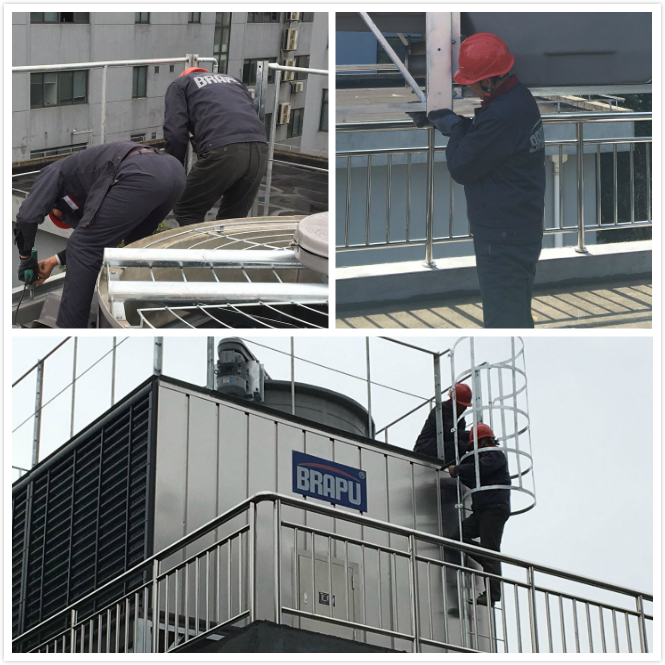
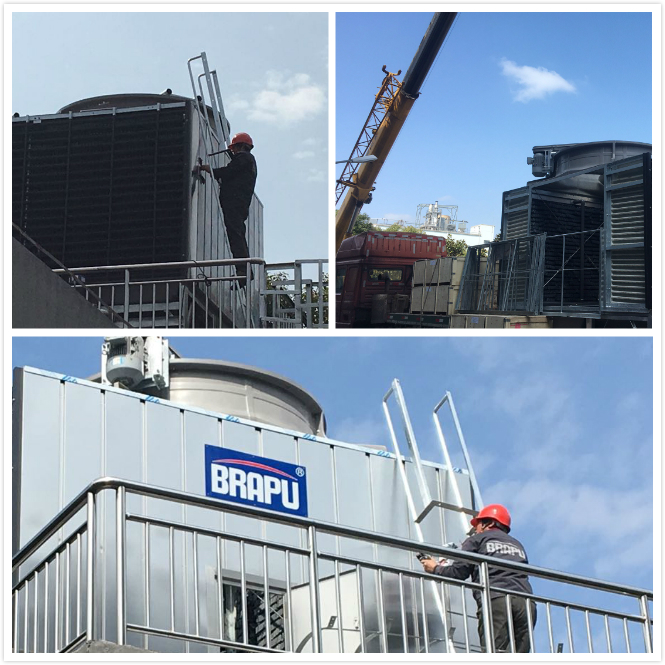
After this training, detailed and standardized operating requirements have been proposed for the installation of cooling towers by engineering technicians on the project site:
1、 Inspection and acceptance. Unpacking inspection: Carefully check the name, model, specifications, and technical performance parameters of the cooling tower, count the equipment and spare parts according to the equipment list, and check whether the equipment manual, product quality certificate, and product performance testing report and other random documents are complete. Check the cooling tower and its components for any damage, rust, or other defects. If the cooling tower uses a concrete foundation, the setting of the concrete foundation should comply with the requirements of the foundation diagram in the cooling tower sample. The position, size, height, etc. of the equipment foundation should comply with the design regulations. The surface of the cooling tower foundation should be flat and smooth, and must be maintained within the same horizontal plane.
2、 Cooling tower installation operation. Due to different specifications, cooling towers can be installed as a whole or assembled on-site.
- On site assembly of cooling towers. The installation of on-site assembled cooling towers includes three parts: main assembly, filling of fillers, and installation of auxiliary components. When assembling the main body of the cooling tower, stainless steel bolts and nuts should be used as fasteners for each connection part. Sealing gaskets or homogeneous materials should be added at the joint of the water collection tray to ensure tightness and no leakage. All welded joints of steel components during installation should undergo anti-corrosion treatment. When filling the cooling tower filler, it is required to have uniform density and spacing, and to avoid collapse and lamination. The filler should not have perforation or rupture, and the filler should be tightly attached to the inner wall of the cooling tower, with no gaps between the sheets. Welding operations of the cooling tower should be prohibited after filling is installed. The installation of auxiliary components of the cooling tower includes water distributors, ventilation equipment, water collectors, and noise reduction devices. The water distributor should be located in the center of the cooling tower, and the water distribution of the water distributor should be uniform. The radial clearance between the end of the cooling tower fan blades and the tower body should be uniform and consistent, and the angle of adjustable angle blades should be consistent. The inlet and outlet of the cooling tower, as well as the dimensions and positions of the nozzles, should comply with the technical conditions or design requirements of the equipment.
- Installation of cooling towers. The foot of the cooling tower and the embedded steel plate of the foundation are directly positioned and welded. The cooling tower is also supported by a steel frame, and the steel components should be properly treated for corrosion prevention during installation. The installation position of the cooling tower should meet the design requirements and should generally be installed in a well ventilated location. The installation of the cooling tower should refer to the operating quality parameters of the cooling tower and verify the bearing capacity of the installed tower ground. Before installing the cooling tower, the concrete foundation should be set according to the foundation size chart provided by the cooling tower sample, and steel plates or reserved anchor bolt holes should be embedded. The foundation elevation of each leg of the cooling tower shall be on the same horizontal plane, and the allowable height error is ± 10mm, and the error of the angle dividing Centre-to-centre distance is ± 1mm. During installation, the foot of the cooling tower and the embedded steel plate of the foundation can be directly positioned and welded, or can be connected with anchor bolts. During installation, it should be placed horizontally and not tilted to avoid uneven water distribution and affecting the cooling effect. The highest elevation for the installation of water pumps and inlet and outlet pipes should be lower than the lowest water level of the cooling tower water tray. When multiple cooling towers are used in parallel, attention should be paid to avoiding uneven water distribution caused by uneven resistance in parallel pipelines. When two or more cooling towers are used together, a separate connecting pipe should be provided for the water tray, and the water level of each cooling tower should be at the same height. When connecting the inlet and outlet water piping above 100mm to the cooling tower, it is advisable to use anti vibration hoses (high-pressure hoses, etc.) to prevent vibration of the cooling tower caused by pipeline vibration.
- Quality standards for installation and construction of cooling towers
The foundation elevation should comply with the design regulations, with a allowable error of ± 10mm. The connection or fixation between the cooling tower foundation bolts and embedded parts should be firm, and each connecting component should be hot-dip galvanized or stainless steel bolts, with consistent and uniform tightening force. The installation of the cooling tower should be horizontal, and the allowable deviation for the levelness and verticality of a single cooling tower installation is 2 ‰ When multiple cooling towers of the same cooling water system are installed, the water surface height of each cooling tower should be consistent, and the height difference should not exceed 10mm. The direction and position of the water outlet and nozzle of the cooling tower should be correct, the water accumulation pan should be tight and free of leakage, and the water distributor should distribute water evenly. The rotating part of a cooling tower with a rotating water distributor should be flexible, and the direction of the water spray outlet should be consistent according to the design or product requirements. - The radial clearance between the end of the cooling tower fan blade and the surrounding area of the tower body should be uniform. For blades with adjustable angles, the angles should be consistent. Inspection quantity: All inspections. Inspection method: Measure with a ruler, observe and inspect, and conduct a water filling test on a stagnant water pan or refer to test records.
After the completion of this installation skills training, the installation engineers’ awareness of installation standards has been further improved, and the results have been very good.
